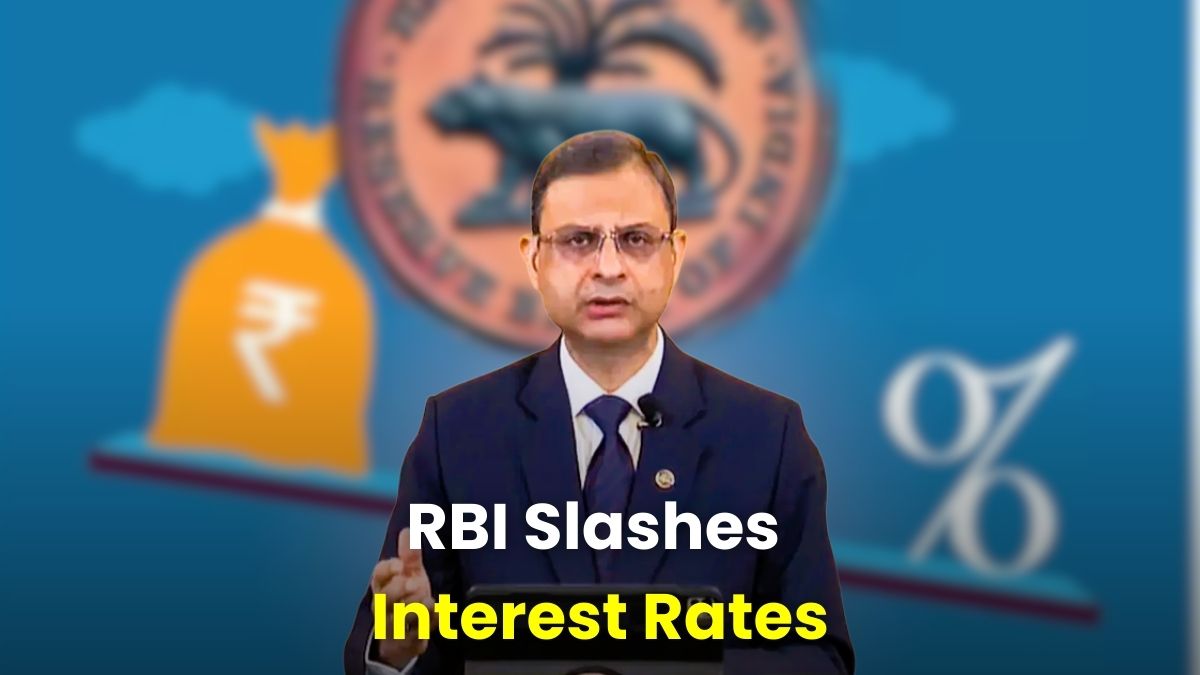RBI Interest Rates – If you’re someone who’s been thinking about taking a loan for a new house, car, business, or even personal expenses, here’s some good news. The Reserve Bank of India (RBI) has just slashed interest rates, and that means loans are about to get a lot cheaper across the board. Whether you’re planning to borrow soon or already have a loan running, this move by the RBI can save you a good amount of money in the long run.
Why Did the RBI Cut Interest Rates?
The RBI reviews and adjusts something called the repo rate from time to time. This is the rate at which the central bank lends money to commercial banks. When the RBI lowers this rate, banks can borrow money at a lower cost, and in turn, they are expected to pass on the benefit to their customers by lowering loan interest rates.
So why did the RBI do it now?
- Economic growth has been slowing down, and many sectors are not performing as well as expected.
- Inflation has been under control for a few months now.
- There is a need to boost consumer spending and business investments.
- The government is focusing on economic revival, and this move supports that direction.
How Will It Affect Your Loans?
Let’s get to the part everyone wants to know. What does this mean for your existing or upcoming loans?
- Lower EMIs: If you already have a loan with a floating interest rate, your monthly EMI is likely to go down.
- Cheaper New Loans: If you are about to apply for a home loan, car loan, or personal loan, you’ll probably get it at a lower rate now.
- Better Loan Refinancing Deals: You might be able to transfer your old loan to another bank offering a better rate.
- Real Estate May Get a Boost: With lower rates, more people may decide to buy homes, which can push real estate sales up again.
Here’s a rough idea of how your EMIs might change for a loan amount of 30 lakh:
- Home loan EMIs may reduce by around 900 to 1,100 rupees.
- Car loans could be cheaper by 400 to 600 rupees per month.
- Personal loan EMIs might drop by 700 to 900 rupees.
- Business loan borrowers may save up to 1,200 rupees a month.
These are just rough estimates, and the actual numbers will depend on the loan amount, tenure, and your credit profile.
Which Banks Have Already Reduced Rates?
Many top banks have been quick to respond to the RBI’s decision. Here’s a glance at how some of them have adjusted their home loan rates:
- State Bank of India: Reduced from 9.15 to 8.65 percent
- HDFC Bank: New rates start from next month at 8.70 percent
- ICICI Bank: Down from 9.25 to 8.75 percent
- Axis Bank: Will reduce rates after a week
- Kotak Bank, PNB, and Bank of Baroda have also announced similar cuts
Keep in mind that these are average rates, and the final rate you get depends on your credit score and loan tenure.
Who Benefits the Most?
This move by the RBI is not just for a select few. Almost every borrower can benefit in some way or the other.
- Homebuyers: This is the perfect time to buy property or refinance a home loan.
- Students: Education loans become slightly easier to afford with reduced repayments.
- Business Owners: Easier access to capital and lower repayment burdens mean more room for growth.
- Personal Loan Seekers: Lower rates make it easier to manage emergencies or big expenses without stressing over high-interest payments.
Smart Tips to Make the Most of the New Rates
If you want to take full advantage of these lower interest rates, here are some practical steps to consider:
- Refinance if You Can: If you already have a loan with a higher rate, talk to your bank or explore other lenders who are offering better deals.
- Prepay High-Interest Loans: Use the savings from the rate cut to repay your existing loans faster and reduce your interest outgo.
- Compare Before You Apply: Always compare rates and terms across banks before choosing where to borrow from.
- Negotiate with Your Lender: If you have a strong credit history, don’t hesitate to ask your bank for a lower rate.
- Maintain a Good Credit Score: The better your credit score, the lower your interest rate is likely to be.
What’s Next?
Many people are wondering if rates could drop even further. While it’s not guaranteed, experts believe that if the economy continues to need support, the RBI might consider more cuts in the future. However, this will depend on inflation trends, global economic changes, and the overall performance of key sectors.
For now, though, borrowers are in a good place. Floating-rate loans are particularly attractive right now, as they can adjust downwards if the RBI cuts rates again.
In simple terms, the RBI’s move is a big relief for borrowers. Whether you’re taking a new loan or managing an existing one, you’re likely to feel the benefit in your pocket. Lower EMIs, cheaper credit, and more affordable housing or business investments can go a long way in helping individuals and the economy.
So, if you’ve been waiting for the right time to apply for a loan, this might just be it. Just remember to borrow responsibly, know your terms, and always keep an eye on your financial health.





